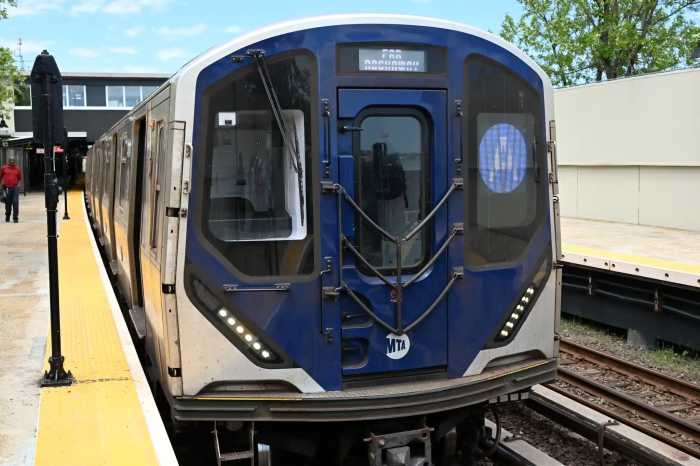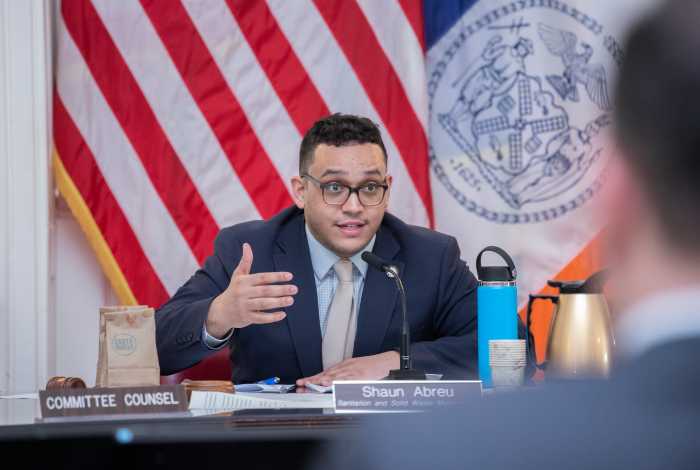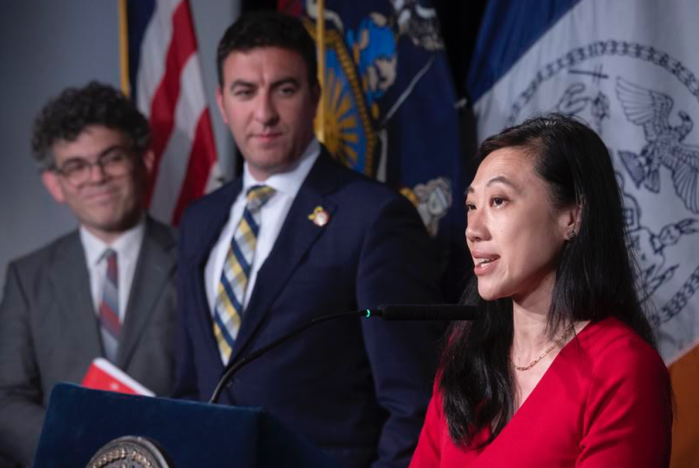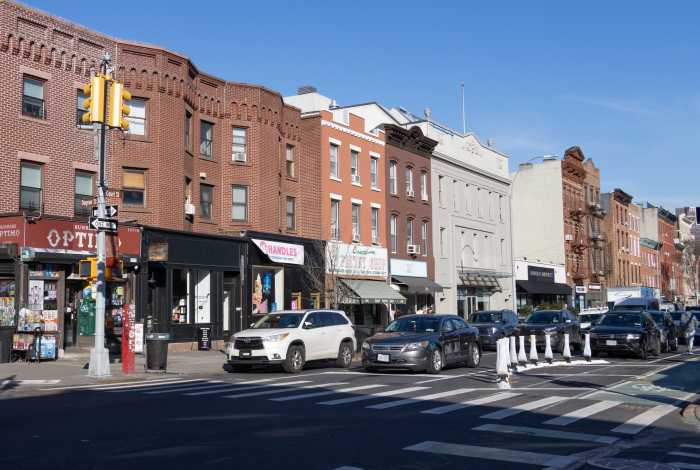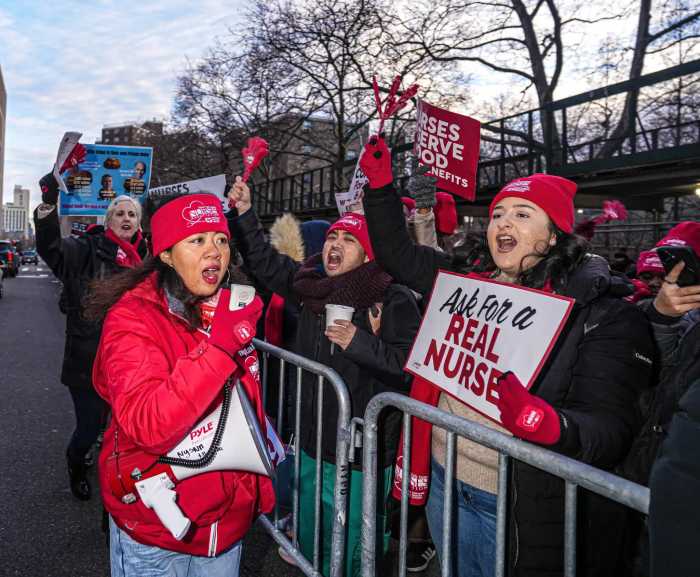The buses are slow and the trains are delayed, but the next head of the city’s mass transit network says he’s stepping into his “dream” job.
Andy Byford, a United Kingdom native who has most recently served a five-year tenure as chief executive officer of the Toronto Transit Commission, will take over the role of transit president at the MTA next month and promises to restore to health a transit system in crisis.
Byford, 52, will preside over subway, bus and paratransit service — each with its own bevy of issues.
Subway delays have soared by more than 200 percent since 2012 and bus service has crawled to become the slowest network in any American big city. Both services have seen ridership drop at a time of economic and population growth for New York and the region.
Meanwhile, wheelchair accessible subway stations make up only about 20 percent of the system and Access-A-Ride is heavily subsidized and stricken with service reliability issues.
“I know that New York is a demanding place to work politically and in terms of the public expectations. But any transit professional who’s worth their salt would love to have a crack at what I call the big three: New York, London or Hong Kong,” Byford said during a recent interview with amNewYork. “It’s been a dream of mine for a long time to come to New York and run New York City Transit. So I’m going into it with my eyes open . . . I’m convinced that we can get New York’s system to where it needs to be for New Yorkers.”
Byford began his career at the London Underground, where he spent 14 years and eventually rose to become the general manager for three of its busiest subway lines. He moved to serve as chief operating officer at RailCorp, Australia’s largest transit system based out of Sydney, before heading to Toronto.
While the TTC is less than a quarter of the size of the MTA, Byford sees similarities in the problems facing the two agencies. While in Toronto, Byford led sweeping changes to management and workplace culture, helped modernize a system with ancient and unreliable infrastructure, and improved accessibility through legal mandate.
South of the border, the MTA uses century-old signal technology, which frequently fails and causes train delays. That exacerbates overcrowding, making the subways appear more crammed with people than ever even though ridership has dropped since last year. Byford’s hiring ends a nearly yearlong search for a new New York City Transit leader, a period of time during which experts say the consequences of years of mismanagement and confused priorities have been deeply felt.
“The challenges at the TTC are very similar to those at New York City Transit, albeit at a smaller scale,” Byford said. “But TTC is no small undertaking. It’s the third largest transit in North America, but it faces the same challenges as New York in rising customer numbers, albeit softening, traveling on aging infrastructure on limited funding. That’s a bit of a triple whammy.”
Byford has never owned a car and met his wife while working in the London Underground. When he moves to Manhattan to take his MTA post next month, he promises to ride subways and buses every day to get to work but to also talk to commuters and MTA employees. It’s a management style he cultivated in Toronto, where he once spent hours navigating Toronto’s transit system in a wheelchair alongside a member of the TTC’s accessibility forum.
“It was absolutely not tokenistic, or even to suggest that I know what it’s like to be person who’s got mobility impairment. But I went with a member of the forum just to get an insight into what it’s like to try and navigate the TTC and it was so insightful,” Byford said. “It was as if you don’t exist. . . . It was a real eye-opener to me and was quite sobering, humbling and shocking in many ways.”
David Bragdon, the executive director of TransitCenter, wrote an opinion-editorial in the Daily News recently in the form of a letter addressed to Byford with suggestions for the next transit chief upon his arrival in New York.
They include not “accept[ing] the chronic excuses you’ll hear” at the MTA and to “stand your ground” with Gov. Andrew Cuomo, who controls the state authority. Bragdon told amNewYork that he believes Byford is “what’s needed” at the MTA and felt that it’s a “good sign” that the agency opted to bring someone in from outside. But Bragdon said only time will tell if the next transit chief can cut through the bureaucracy and poisonous politics at the MTA.
“One of the biggest obstacles” for the position “has been sort of the lack of accountability in Albany and the continual depletion of resources from the MTA and misprioritization on cosmetics instead of the nuts and bolts of actually running the system reliably,” said Bragdon. “That’s going to be a big struggle for him to change that priority, which has been set in Albany.”
While at the TTC, a “five-year plan” Byford developed after becoming the CEO led to revamped employee relations, an increase in elevator installations at subway stations and modern fare payment and train traffic technology. It helped land the TTC a designation as the American Public Transportation Association’s outstanding public transit system of the year in 2016. Though in a poll conducted by the Toronto Star, 59 percent of voters responded to the news with the answer, “Seriously?”
Byford has been studying the issues of the MTA and has some familiarity with the agency. He served on a 2014 MTA reinvention commission and, more recently, on the panel for Cuomo’s Genius Transit Challenge, which called for international experts to weigh in with their own fixes for the agency. He praised MTA chairman Joe Lhota’s still yet-to-be-funded Subway Action Plan to cut down on delays.
He also said he’s intimately familiar with battling the politics of a such a job. Byford’s ascent to TTC leadership was the result of a “political coup” that thrusted him into the agency’s top position after only three months as chief operating officer.
“So what you need to do as a transit professional, as a bureaucrat, is make the case for transit so you don’t get self-involved in politics, which is obviously a factor in every big transit agency,” Byford said. “My job will be to make a compelling case for why investment is required; why we should pursue a certain direction. At the end of the day here, the bureaucrat advises, the politician decides. But I will aim to get their confidence and be very persuasive that we need to take New York transit forward.”




